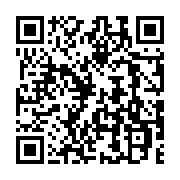Automating compliance evidence across treasury and product teams
Compliance evidence exists to prove that policies are being executed, but collecting it the old way has become unbearable. Treasury and product teams spend nights dumping spreadsheets into shared drives, legal teams chase missing approvals, and regulators still return with questions because the evidence is inconsistent. Automating the evidence supply chain does not mean turning people into robots. It means embedding data capture into the workflows teams already use so the required artifacts materialize without a separate scramble—and so KYC AML compliance for online banks stays rock solid while digital identity verification for banks gets faster.
Start from the control inventory
Evidence automation begins by cataloging every control the bank promised regulators, card networks, and auditors. List the owner, cadence, data sources, and acceptable proof for each control. ElectronicBanker installations treat this catalog as the contract: when a team launches a new feature or process, they have to map it to existing controls or propose updates. Starting from the inventory avoids gaps where a team assumes “compliance handles it” while compliance assumes “treasury has the report.”
Instrument the systems of record
Controls depend on data from cores, payment processors, policy engines, and HR systems. Instead of asking humans to export CSV files, attach lightweight connectors that push data into the evidence platform automatically. ElectronicBanker’s approach is to subscribe to the same telemetry powering operations so compliance can reuse trusted pipelines. For manual processes, embed structured forms inside the workflow tool so the human completing a review simultaneously records the evidence. The connector pattern keeps evidence current without teaching every analyst how to run ad hoc extracts and ensures digital identity verification for banks is sourced from the exact systems regulators inspect.
Normalize and tag everything
Evidence must be searchable and auditable. Normalize each artifact with metadata: control ID, time period, system, team, and reviewer. Enforce naming conventions and storage policies so the warehouse, file store, and ticketing systems all reference the same object. ElectronicBanker systems assign deterministic IDs to every artifact and automatically tag them as “draft,” “awaiting approval,” or “locked.” This prevents teams from submitting outdated screenshots or partial exports when the auditor expects finalized numbers.
Embed approvals and attestations
Regulators expect proof that qualified people reviewed the evidence, not just that data exists. Configure workflows where the evidence object flows to the right approver, collects a sign-off, and records comments. If a control requires quarterly attestations from the CFO, the system should prompt the executive, capture the sign-off, and lock the evidence for that period. ElectronicBanker customers also route escalations when approvers miss deadlines, ensuring that compliance knows about gaps before the examiner does and that KYC AML compliance for online banks stays fully documented.
Link evidence to alerts and incidents
Evidence is strongest when it references the underlying telemetry. Link each artifact to the alerts, tickets, or incidents that triggered action that period. If customer disputes exceeded the threshold, the evidence package should include both the summary metrics and the tickets showing remediation. ElectronicBanker setups automatically pull those references so the regulator can drill from a policy control down to the specific event timeline without leaving the portal.
Provide read-only workspaces for auditors
Instead of emailing zip files, grant auditors a read-only workspace where they can browse evidence, filter by control, and export what they need. The workspace should show lineage: who uploaded the artifact, who approved it, and whether any redactions were applied. ElectronicBanker plugs leverage role-based access and audit logging so the bank knows which files were downloaded and when. Auditors appreciate the transparency, and the bank avoids version-control nightmares.
Keep people in the loop with status signals
Automation does not eliminate accountability. Surface dashboards showing which controls are on track, which are overdue, and which have open questions from auditors. Treasury and product leaders should be able to see their queue without digging through compliance trackers. ElectronicBanker customers feed these signals into weekly ops reviews so everyone understands how their day job influences upcoming exams.
Reuse evidence for multiple regimes
Most data points satisfy more than one obligation; the trick is proving that the reused artifact still meets each regulator’s requirements. Tag evidence with the relevant frameworks (SOC 2, SOX, FFIEC, card network) and document any supplemental commentary. ElectronicBanker systems allow teams to copy artifacts between frameworks with a note explaining how the control maps across regimes. This reuse slashes duplicated effort without hiding the nuances that examiners care about.
Measure the effectiveness of automation
Track how long controls stay open, how many artifacts arrive late, and how often auditors request resubmission. Compare those metrics before and after automation to prove the investment worked. ElectronicBanker dashboards highlight stuck approvals, aging artifacts, and controls with repeated exceptions. Those insights help compliance leaders make the case for more connectors, staffing shifts, or policy updates.
Compliance evidence automation is ultimately about trust. When regulators see that artifacts are born from live telemetry, approved inside structured workflows, and presented with full lineage, they begin to trust the bank’s control environment. That trust lets treasury and product teams push faster without inviting a remediation order.
Related posts
View allBy VEGAS Locals
Things to do in Vegas
Find the best spots in Vegas with Vegas.xyz


